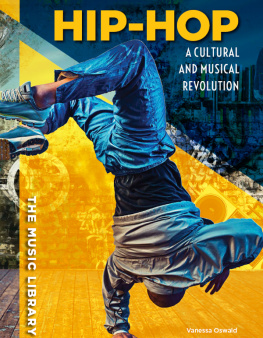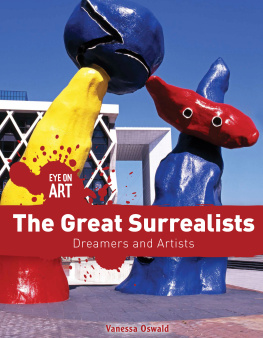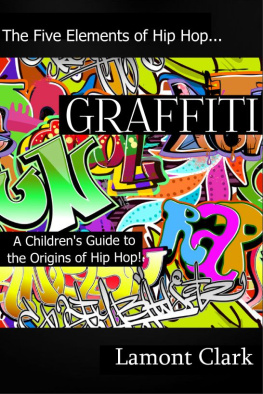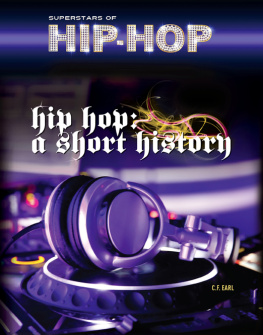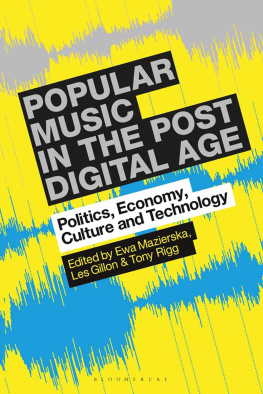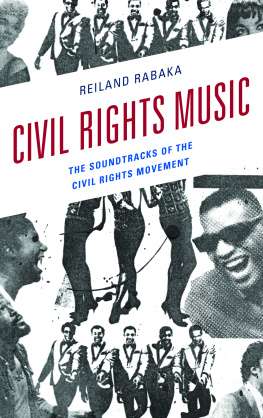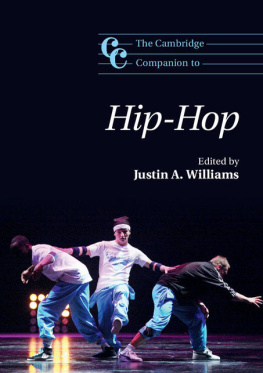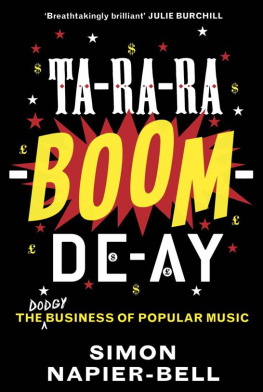Published in 2019 by
Lucent Press, an Imprint of Greenhaven Publishing, LLC
353 3rd Avenue
Suite 255
New York, NY 10010
Copyright 2019 Greenhaven Press, a part of Gale, Cengage Learning
Gale and Greenhaven Press are registered trademarks used herein under license.
All new materials copyright 2019 Lucent Press, an Imprint of Greenhaven Publishing, LLC.
All rights reserved. No part of this book may be reproduced in any form without permission in writing from the publisher, except by a reviewer.
Designer: Deanna Paternostro
Editor: Vanessa Oswald
Library of Congress Cataloging-in-Publication Data
Names: Oswald, Vanessa, author.
Title: Hip-hop : a cultural and musical revolution / Vanessa Oswald.
Description: New York : Lucent Press, [2019] | Series: The music library | Includes bibliographical references and index.
Identifiers: LCCN 2018020132 (print) | LCCN 2018022417 (ebook) | ISBN 9781534565166 (eBook) | ISBN 9781534565159 (library bound book) | ISBN 9781534565142 (pbk. book)
Subjects: LCSH: Rap (Music)--History and criticism. | Hip-hop.
Classification: LCC ML3531 (ebook) | LCC ML3531 .O8 2019 (print) | DDC 782.421649--dc23
LC record available at https://lccn.loc.gov/2018020132
Printed in the United States of America
CPSIA compliance information: Batch #BW19KL: For further information contact Greenhaven Publishing LLC, New York, New York at 1-844-317-7404.
Please visit our website, www.greenhavenpublishing.com. For a free color catalog of all our high-quality books, call toll free 1-844-317-7404 or fax 1-844-317-7405.
Foreword
M usic has a unique ability to speak to people on a deeply personal level and to bring people together. Whether it is experienced through playing a favorite song on a smartphone or at a live concert surrounded by thousands of screaming fans, music creates a powerful connection that sends songs to the top of the charts and artists to the heights of fame.
Music history traces the evolution of those songs and artists. Each generation of musicians builds on the one that came before, and a strong understanding of the artists of the past can help inspire the musical superstars of the future to continue to push boundaries and break new ground.
A closer look at the history of a musical genre also reveals its impact on culture and world events. Music has inspired social change and ignited cultural revolutions. It does more than simply reflect the world; it helps to shape the world.
Music is often considered a universal language. A great song or album speaks to people regardless of age, race, economic status, or nationality. Music from various artists, genres, countries, and time periods might seem completely different at first, but certain themes can be found in all kinds of music: love and loss, success and failure, and life and death. In discovering these similarities, music fans are able to see how many things we all have in common.
Each style of music has its own story, and those stories are filled with colorful characters, shocking events, and songs with true staying power. The Music Library presents those stories to readers with the help of those who know the stories bestmusic critics, historians, and artists. Annotated quotes by these experts give readers an inside look at a wide variety of musical styles from early hip-hop and classic country to todays chart-topping pop hits and indie rock favorites. Readers with a passion for musicwhether they are headbangers or lovers of Latin musicwill discover fun facts about their favorite artists and gain a deeper appreciation for how those artists were influenced by the ones who paved the way in the past.
The Music Library is also designed to serve as an accessible introduction to unfamiliar genres. Suggestions for additional books and websites to explore for more information inspire readers to dive even further into the topics, and the essential albums in each genre are compiled for superfans and new listeners to enjoy. Photographs of some of musics biggest names of the past and present fill the pages, placing readers in the middle of music history.
All music tells a story. Those stories connect people from different places, cultures, and time periods. In understanding the history of the stories told through music, readers discover an exciting way of looking at the past and develop a deeper appreciation for different voices.
INTRODUCTION
Hip-HopPhilosophy
T he roots of hip-hop culture stretch back more than 40 years; however, this movement is still recognized as a fairly new addition to modern culture. This particular culture is one that is self-made and constantly evolving. Some people claim that hip-hop is dead; however, it still lives, just in different ways than how it may have started out.
Hip-hop grew from its humble beginnings in the South Bronx section of New York City into a significant and influential cultural movement. Created in the mid-1970s by poor Bronx residents with few resources, hip-hop has become a billion-dollar industry with a worldwide reach. Hip-hop has influenced the way people make music, the way they dance, and the way they wear their clothes. It has also shaped peoples political views and turned many people into entrepreneurs.
Four Elements of Hip-Hop
Hip-hop culture encompasses four main components: rapping (MCing), disc jockeying (DJing), graffiti art, and break dancing (B-boying). At its beginning, hip-hop was inspired by a variety of other art forms, many of which still influence and inspire hip-hop artists today. One of hip-hops key characteristics is its ability to take an idea, a practice, or a way of doing something and make it into something new.
For instance, spoken-word poets who recited rhyming lyrics over a musical backing, such as the Last Poets, Gil Scott-Heron, and Rudy Ray Moore, were among the group of performers who are often considered the first generation of rappers. Each of them infused their poetry with political commentary. Their work included condemnation of white oppression, insults to then-President Ronald Reagan, and support of the black power movement.
Early hip-hop DJs invented a new way to enjoy music by repeating song passages best suited for dancing, while graffiti artists went from writing their names on buildings and billboards to creating dazzling art showcased in galleries. B-boys, also known as boogie boys or break-dancers, created a new style of dance featuring acrobatic skills.
Rap Takes Over
The most popular component of hip-hop culture is rap. Even though the words hip-hop and rap are often used interchangeably, they are not the same thing. Rap is part of a larger culture, while hip-hop is the culture itself. When people refer to hip-hop music, they typically mean rap, even though hip-hop music also includes other musical genres, such as rhythm and blues (R&B), soul, funk, jazz, and even rock and roll.
The first major rap recording was Rappers Delight, which was released in 1979 by the Sugarhill Gang. Just five years later, rap music was the dominant part of hip-hop culture. In early rap recordings, rappers typically performed over music made by musicians who simply copied the original music of other artists. By the mid-1980s, however, sampling and advances in technology and studio equipment (most significantly drum machines) changed the way rap was made. Sampling allowed producers, the people in rap who make the music, to incorporate segments of the original recordings of other artists into the producers own material. Today, rap is made in a number of ways, including sampling and playing live music.

